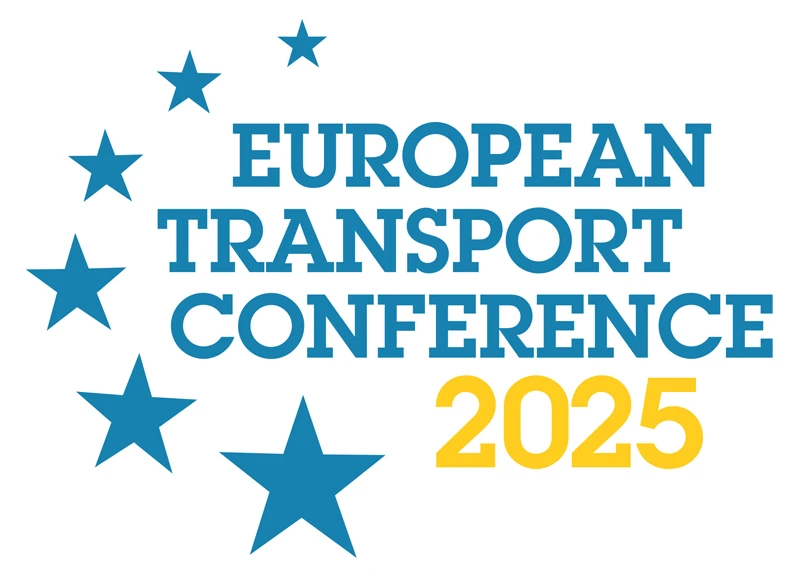-
Past ETC Papers

Browse, search and view papers from the past AET Conferences.
-
Members' Area

AET promotes networking and exchange of ideas, information and opportunities amongst members.
Conference Papers 2023
Milan, Italy
ETC Conference Papers 2023
Urban mobility implications of last-mile delivery
Seminar
Day 1 (6 Sep 2023), Session 2, Urban Freight Planning, 14:00 - 16:00
Status
Accepted, documents submitted
Submitted by / Abstract owner
Amanda Oliveira Mesquita
Authors
Amanda Oliveira Mesquita – Ph.D. student at Corvinus University of Budapest;
Zsolt Matyusz – Associate professor, Corvinus University of Budapest;
András Munkácsy – Senior researcher, head of research centre, KTI Hungarian Institute for Transport Sciences and Logistics.
Short abstract
This paper presents a structured analysis of different public sources (scientific and grey literature) to better understand the relationship of last-mile delivery and urban mobility, calling the attention of stakeholders to enhance city planning.
Abstract
Urban deliveries has been facing changes in the past years. These changes can be related to the continuous migration of the population to urban areas, the increasing importance of e-commerce (growing above 10% per year even before the pandemic, see Melacini et al, 2018), the fast-paced life of citizens and companies, and the volume and types of cargos and delivery transport systems. In order to sustain all these changes and rising numbers of order volumes/product demand, new concepts for urban mobility and urban planning must be considered, as city logistics must provide an environment favourable for living and for business operations, with conditions that intend to please all urban stakeholders, being sustainable and reliable.
The process of analysing last-mile delivery under the umbrella of urban mobility involves a variety of stakeholders with different and sometimes conflicting perspectives and interests. For example, express delivery options make goods arrive to the customers in the same day but, at the same time, it is increasing road traffic on city streets, generating additional congestion and pollution affecting others, in spite of the efforts of local authorities to implement more sustainable policies.
This conference contribution aims to reveal the role of last-mile delivery in the urban mobility of the present and near future, identifying current (post-COVID19) trends of commercial operations and human activities in urban areas, already available and emerging technologies, as well as existing and upcoming business models. This is based on a systematic literature review to provide structured information of the impact of delivery services on urban mobility, for the basis of planning an urban mobility system that can deal with all the fast-paced changes, guaranteeing future cities with a liveable environment for its citizens.
The paper summarizes the history of last-mile delivery services on how it started and how it evolved in the context of urban mobility, contextualizing main concepts and analysing publicly available business data. On the basis of a literature review in the PRISMA framework (Page et al., 2021), including study of the scientific and grey literature, the future solutions of last-mile delivery will be assessed in light of expected urban mobility scenarios, in order to highlight the new possibilities for the market and how they operate.
This review will clarify the general subjects (city infrastructure, urban mobility plans, new technologies, traffic congestion/emissions, land use, key stakeholders) relating last-mile delivery and urban mobility, identify research trends and current research gaps, synthesizing existing knowledge, and targeting further research topics. Besides varied sources, the review covers 62 articles in Q1 and Q2 journals, over the past 10 years. First outcomes indicate that there is knowledge about the interference of last-mile delivery in urban mobility and that improvements must be done, but the results of the analysis show that previous works are limited either by focusing on transportation costs and environmental problems, or by presenting new possibilities for the improvement of the delivery systems in order to become less environmentally harmful or give more attention on other externalities. Even though some sources highlight the influence of delivery services in city logistics and the increase of emissions and traffic congestion, the relationship with sustainable urban mobility is overlooked in many cases. Despite the relevance of the subject, it is observed that this field is still little explored and there are many possibilities of academic research to provide insights on how to improve urban mobility to keep up with this new trend. The analysis of Sustainable Urban Mobility Plans (SUMP) indicates that most of them pay only minor attention (if any) to city logistics, and Sustainable Urban Logistics Plans (SULP) are much less common elements of city planning practices throughout Europe. The research shows that there is a wide range of possibilities in urban mobility planning missing from current records. There so, this research will draw a structure to incorporate the last-mile in the urban mobility, outlining a model which indicates the role of last-mile in this scenario. It will also indicate how different stakeholders are affected, their perspectives, and interference on their daily life. Moreover, it will showcase how the new trends in last-mile delivery may affect the system and their impact on urban planning.
References
Melacini, M., Perotti, S., Rasini, M., & Tappia, E. (2018). E-fulfilment and distribution in omni-channel retailing: a systematic literature review. International Journal of Physical Distribution & Logistics Management, 48(4), 391-414.
Page, M. J., McKenzie, J. E., Bossuyt, P. M., Boutron, I., Hoffmann, T. C., Mulrow, C. D., & Moher, D. (2021). The PRISMA 2020 statement: an updated guideline for reporting systematic reviews. International journal of surgery, 88, 105906.
Programme committee
Freight and Logistics
Topic
Supply chain challenges – impacts of labour and resource constraints in freight and passenger transport
Documents:

Association For
European Transport
Forester House
Doctors Lane
Henley-in-Arden
Warwickshire, UK
B95 5AW
+44 (0) 15 64 793552
VAT number: 710 1866 64
Conference Supporters & Endorsers




Legal Entity
The Association for European Transport is registered as an Association ('vereniging') with the Chamber of Commerce for Haaglanden in The Netherlands under company number 27170096.
Built on Zenario




